Tags
Related Posts
Share This
Touring the Hubbub
By Arianna Sullivan/Photos by Amanda Tyler
“This,” says Marquita Sena, “is my favorite seal of the whole building.”
We are standing at the edge of the balcony that stretches all around the circumference of the inside of Santa Fe’s Capitol building, The Roundhouse. The seal that Marquita refers to sits all the way down on the first floor, centered by the circular building “In the center we have both the American Bald Eagle and the Mexican Harpie,” begins Marquita, explaining her fondness for this particular seal, “and they are encircled by the Zia symbol—which represents the four points of a compass, the four periods of the day, the seasons of the year, the four stages of life.” She tells us, with the same pride in her voice as when she had explained that all of the marble in the building is from New Mexico, that the seal is set in the floor with Turquoise—New Mexico’s state stone.
“It is this representation of both the Native American and the American that the building does so well,” explains Marquita. Marquita’s eyes light up as she tells us how her husband used to take her flying over the roundhouse before she ever worked there. “From above we could see the shape that the building was designed to make—the shape of the Zia.”
Marquita is not the only tour-guide for the Roundhouse who has a sense of personal pride for the building. The tour guides, who are seated around a long rectangular table chatting and enjoying each other’s company when we first approach them, become serious and full of praise when we ask them about their jobs. All around the table the women echo each other with variations of, “we love this building.” Several of the women are retired, and have been giving tours of the state Legislature for anywhere from 6 to 13 years. They have a comfortable knowledge of the building, its history, its artwork, and they all have their favorite places to visit when they take groups on tours.
“My grandfather was a representative,” explains Liza D. Martinez, who works outside of the Legislature as a substitute teacher, “I like being here because I still feel his spirit here in the building.”
Each of the women—there is also a man who gives tours, but he is off giving a scheduled tour when we meet the group—sitting bedecked in Mardi-Gras beads gifted by a co-worker from Louisiana, has an affinity for a different part of the building.
“We love meeting all of the people who come through here,” explains Suzy Salazar. Her sister Janette, seated next to her, nods enthusiastically and finishes Suzy’s sentence for her. “Especially,” she says, “people who have seen state capital buildings all around the country and still tell us how beautiful ours is.”
They chat about the artwork—of which there is more than $6 million worth on display—and the way that they change the tour for foreigners or children from Santa Fe on school fieldtrips, but when we ask if any of them would like to show us their favorite spot they get quiet.
“Well,” says Evie Rendon, who has given tours of the building for 13 years, “we can schedule you for a tour.” The women at the “Senate Tours” table are friendly, but their job is no joke. Finally Marquita gets up from her seat saying that she will take us on an abbreviated tour.
She takes us through the Roundhouse, explaining that “usually I’d stop the tour here to explain how a bill is passed, but we’ll just keep going,” with as much seriousness as she tells us the history of the diverse collection of art-work in the building. We wander in what could be circles, up a few staircases with brass railings that match the elevators.
“The brass in the building takes four months to be polished in all,” explains Marquita. As we walk in semi-circles on each floor, occasionally branching out into one of the four directions towards which an arm of the building extends, I am lost in a sense of roundness. There is the rounded wall on one side of me—dotted with brass elevators—and there is the brass bannister of the rotunda looking down to the first floor on the other side of me. These are my landmarks, and they reoccur on every floor, hardly giving me any sense of direction whatsoever.
At the balcony on the third floor, Marquita pauses, gestures to the seal carved into the floor below, and concedes that we have arrived at her favorite part of the building. But there are still important locations we must be shown, even on an abbreviated tour, so Marquita only stops at the seal for a beat longer than any of the other landmarks. In the governor’s office she delivers a passing comment to the secretary—“did you get your beads?”—before turning back to me with the history of the Clara Apodaca Governor’s Gallery.
Back at the seal, ready to return to the tour guides’ table downstairs, Marquita she turns to me with a hint of a smile.
“So, if we were to get back to the stairs,” she says, “do you know which way we’d go?” I look around and try to orient myself in the circular architecture, gesturing in the complete wrong direction.
“Nope,” Marquita says simply, “we need to go East. All of my landmarks are on the East side.” I turn and follow her back to the table of tour guides, each with their own appreciations for the building they show people through during the legislative session each year, each with their own secret landmarks within its circles.






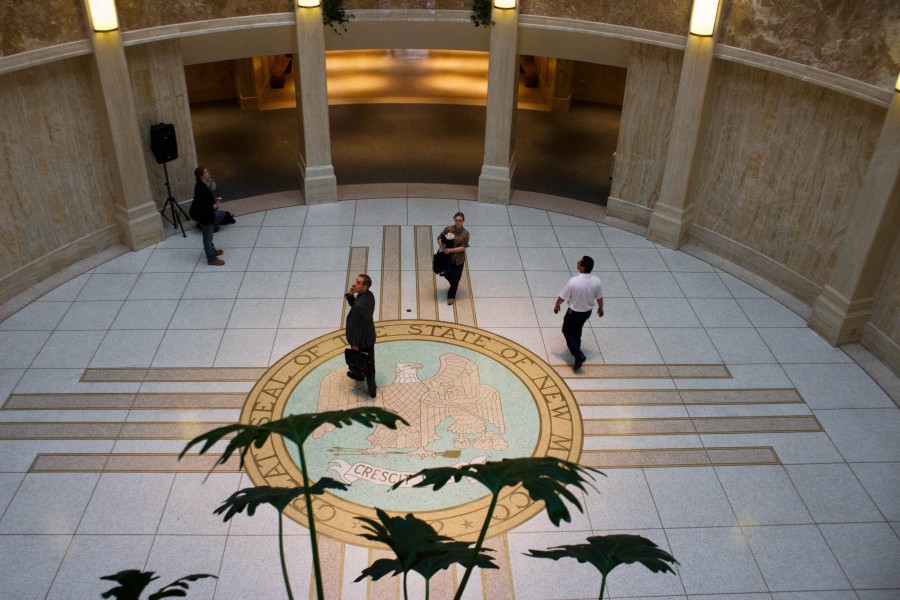
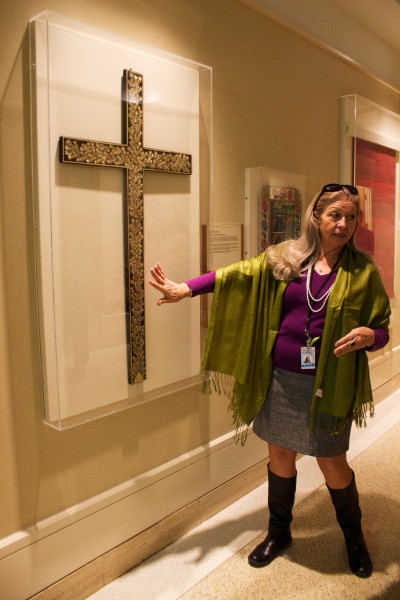
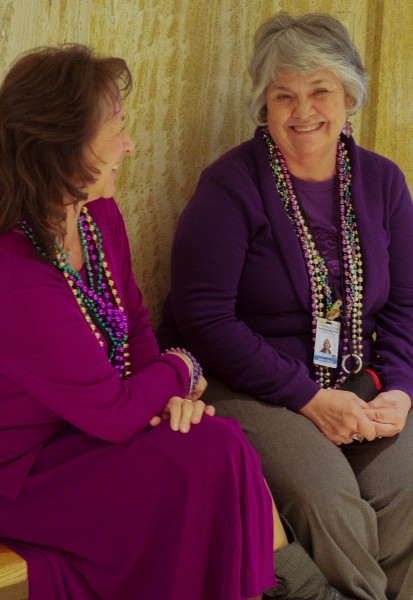
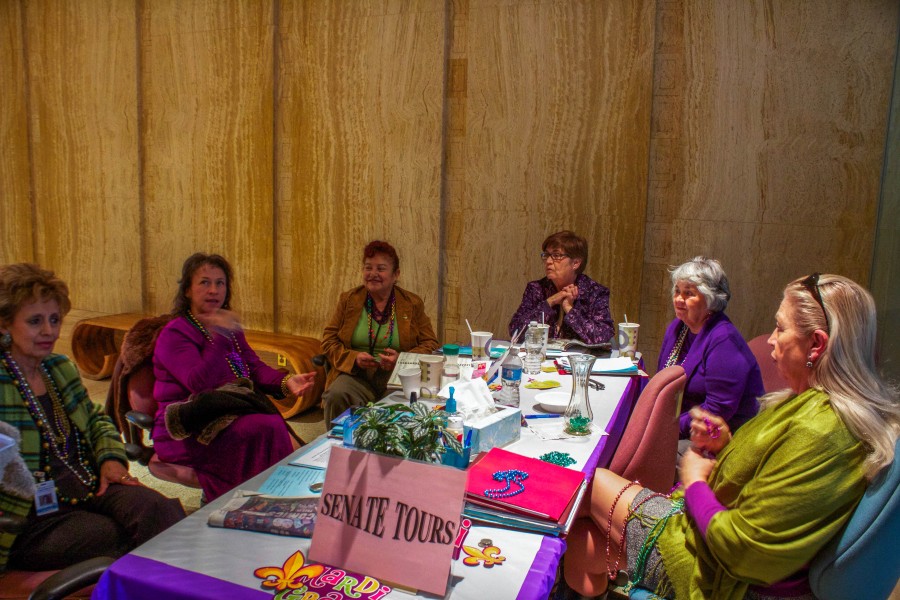
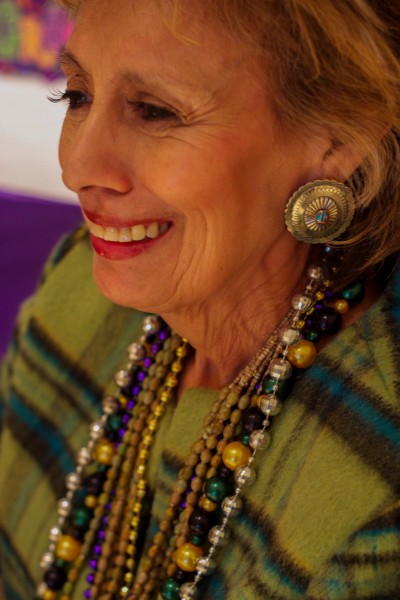
 Jackalope Magazine is the student magazine of Santa Fe University of Art and Design. Building on the interdisciplinary nature of our education, we aim to showcase the talent of our university and character of our city.
Jackalope Magazine is the student magazine of Santa Fe University of Art and Design. Building on the interdisciplinary nature of our education, we aim to showcase the talent of our university and character of our city.